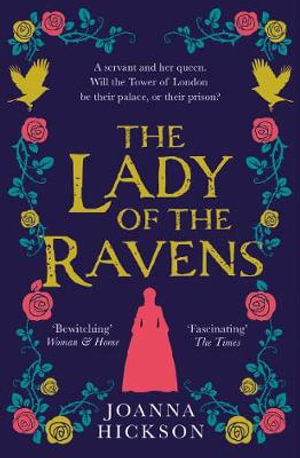By Joanna Hickson
When I was researching the history of Joan Vaux I very quickly realised that her character and life were too remarkable and eventful to be contained in one novel. It had to be two.
Those people who have already read ‘The Lady of the Ravens’, (published January 2020) will know that it tells of Joan’s rapid rise from obscurity to royal service shortly after Bosworth, the battle which catapulted Henry Tudor on to the throne of England. Chance brings Joan into the household of his new queen, Elizabeth of York, where she views at close quarters the constant threats to the establishment of the Tudor court, in a period when loyalty and trust are fickle commodities and the legend that the presence of ravens in the Tower of London is essential to the security of the country and the throne, is regularly threatened by disbelieving soldiers.

Initially, ‘The Queen’s Lady’ (to be published on Jan 20th 2022) recounts the final morbid years of the first Tudor king, Henry VII, before England and the royal court change radically under his young and flamboyant successor, Henry VIII.

Early in the narrative Joan finds herself out of royal favour when the hard-won trust, which she and her husband Sir Richard Guildford have long enjoyed at court, comes under serious threat. Tragedy stalks the royal family, conspiracies build against the throne and, overcome by illness and paranoia, Henry VII develops a chronic distrust of his courtiers and counsellors, particularly Sir Richard. In consequence Joan also experiences a series of personal ups and downs and eventually, although held high in the royal favour of young Henry VIII, she faces an uncomfortable choice between continuing in loyal service to the crown or considering her own happiness.
I found completing Joan’s story an emotional ‘lockdown’ marathon. I became immersed in her dilemmas and full of admiration for the strength of character she showed in overcoming them, especially in view of the vicissitudes of late medieval life. Her mother had been born in Italy and from the start of my research it was obvious that Joan’s European origins, the time she had spent in France and Italy before the age of ten, when her family was forced into exile during the Wars of the Roses, and the education she subsequently received in England as a ward of Lady Margaret Beaufort, had stood her in excellent stead, despite losing her father on the battlefield and her mother to the demanding service of the imprisoned and widowed ex-queen Marguerite of Anjou. I believe that few fifteenth century girls, even had they received the benefit of a cosmopolitan childhood and the use of Lady Margaret’s extensive library, would have become as widely read and fluent in French, Italian, Latin and English by the age of sixteen as Joan did. All of which stood her in good stead through the rest of her life.
Joan lived to the age of seventy-five, was much admired by the internationally famous scholar Erasmus and entrusted with the care and education of Henry VII’s children, including Margaret Queen of Scots, King Henry VIII of England and Queen Mary of France. However, much though she must have influenced the monarchs of three countries, she failed to win the honour of having her portrait painted by Holbein, which might possibly be the reason she has received little attention from Tudor historians. I hope The Lady of the Ravens and The Queen’s Lady might go some way towards correcting that deficiency.

















oh so she’s the governess lady who accompanied Mary Tudor to France? I read the french King disliked Joan and had her sent back to England because she was trying to stop him from visiting his beautiful wife as often as he wished…poor Mary lost her protector against the old perv.